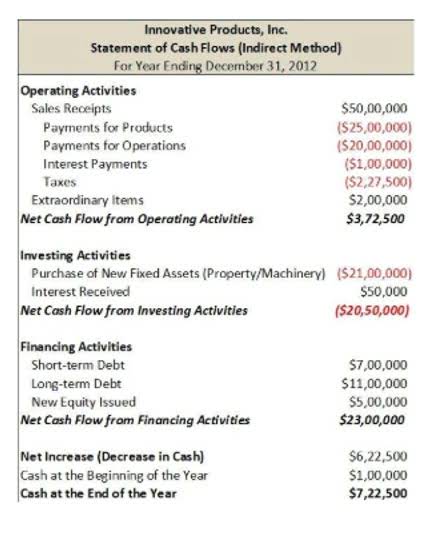Is the Microbrewery Business Profitable? Tables & Stats Included

Lee Jones is a seasoned Business Finance Specialist with over two decades of invaluable experience in the financial sector. With a keen eye for market trends and a passion for helping businesses thrive, Lee has become a trusted advisor to countless organizations seeking to navigate the complexities of finance. With a 2022 revenue of $57.786 billion, Anheuser-Busch Inbev is the largest beer company in the world. The second largest beer company in the world is Heineken, which had a revenue of $38 billion in 2022. This is even more so in the microbrewery business, as quantities can Law Firm Accounts Receivable Management vary depending on the configuration of your business. In this article, we’ll break down the differences and help you determine what a “good” brewery margin is for your business.

Post-Pandemic Boom in Brewery

The cost of raw materials, such as hops, malt, yeast, and water, directly impacts a brewery’s profit margin. Fluctuations in ingredient prices and availability can affect production costs. To improve profits in today’s beer industry breweries must find new ways to control costs, boost revenue and tap previously hidden catalysts for growth. For example, you should include here all your purchases of raw materials (malt, hops etc.) as well as any other ingredients and products that go into the beer production. For example, you would also include all packaging expenses (the beer cans, etc.).
Craft brewery industry overview
Depending on your concept, you’ve got somewhere between 30 and 300 ingredients, many of which are found in multiple menu items in various amounts. On top of that, their costs are constantly changing—probably up more than down. These variables are used to calculate your recipe costs, which can be a lot of work to do manually. This is what you pay your salary and hourly workers, along with any independent contractors. Look in your POS reporting for hourly labor and check your books for the others.

Are Breweries Profitable? Exploring the Profit Potential of Breweries
However, achieving and sustaining profitability requires carefully managing costs and implementing smart business strategies. By focusing on managing financial records, controlling production costs, and implementing AR software, breweries can reduce their expenses, increase their cash flow, and maximize their business potential. Overall, implementing AR software can be an effective way for breweries to reduce costs, increase cash flow, and gain valuable insights into their business operations. By choosing a reliable software provider like Notch, breweries can streamline their billing and collection processes and take their business to the next level. Another crucial aspect of financial record management is understanding inventory and cost of goods sold (COGS). By tracking inventory levels and accurately calculating COGS, breweries can gain a clear understanding of how much it costs to produce each unit of beer.
- However, it’s important to note that these margins can fluctuate, and achieving higher profitability often requires strategic marketing, cost control, and efficient operations.
- For instance, you might run a gastro brewery – a common venue type in the US.
- Think of it as the “brewery-to-pint glass” movement, similar to how farm-to-table restaurants have found success by eliminating middlemen.
- Therefore, we use P&L to understand a company’s ability to generate profits and, more generally, to assess its financial health.
- By setting up a store online, breweries can reach a wider audience and serve customers far beyond their local area.

Breweries can be profitable, with typical profit margins of around 20% to 25%, especially when direct sales through taprooms are maximized. While initial startup costs for equipment and real estate are high, efficient operations and smart distribution strategies improve profitability. Breweries that target niche markets and scale effectively often achieve sustained growth in the competitive craft beer industry. bookkeeping To put it simply, efficient cost management is critical for breweries to achieve higher profit margins through margin optimisation.
- EBITDA and net profits depends on the scale of your business (revenues) and your cost structure.
- The choice of distribution channels, such as self-distribution or working with wholesalers, can largely influence profitability.
- In other words, you must know how much revenue you must generate to reach break-even and make profits.
- This means that your brewery’s profit margin is 15%, indicating that for every dollar in revenue, 15 cents are retained as profit.
- Joe Nicholson was a manager, server, and busser for 9 years at one of the busiest restaurants in California, Tower Cafe.
Understanding and improving profit margins is crucial for success
It’s important to note that profit margins can vary significantly based on factors such as brewery size, location, distribution model, and operational efficiency. However, by implementing strategies to boost revenue and minimize costs, breweries can work towards improving their profit margins over time. Large corporate brewery accounting beermakers such as Anheuser-Busch and MillerCoors recognize the appeal of craft beers and have diversified their product portfolios. Names like Terrapin Beer and Goose Island are craft brews from these corporate giants.
Expand sales channels

Building strong relationships with suppliers and negotiating favorable terms can significantly impact cost management for breweries. Efficient packaging and shipping processes are also crucial to ensure customer satisfaction and a higher gross margin for your online sales. Breweries sell branded stuff like clothing, brew supplies, and accessories. Not only this adds to the revenue, but also helps to improve brand awareness and customer loyalty. Both the taproom and online platforms can be used to sell such merchandise and expand the potential reach.

